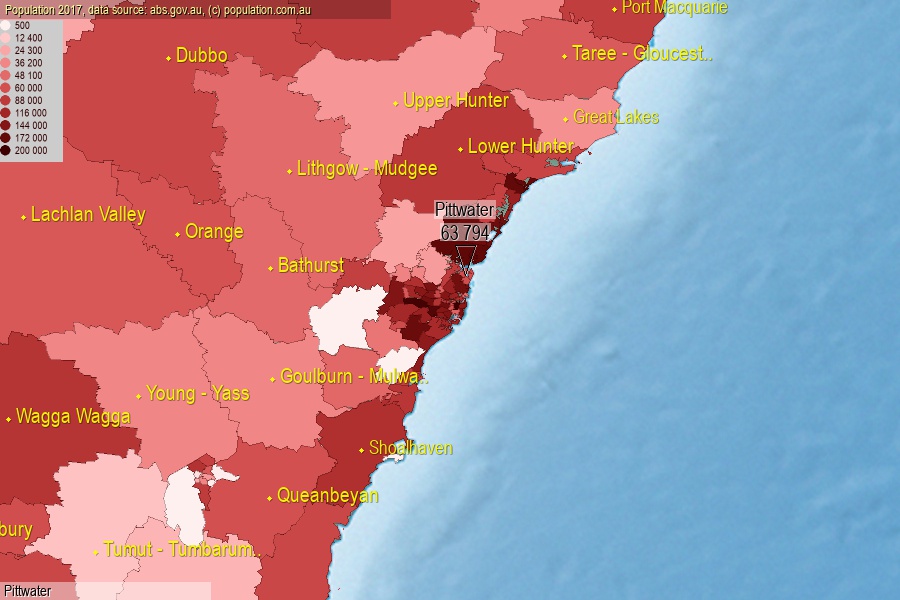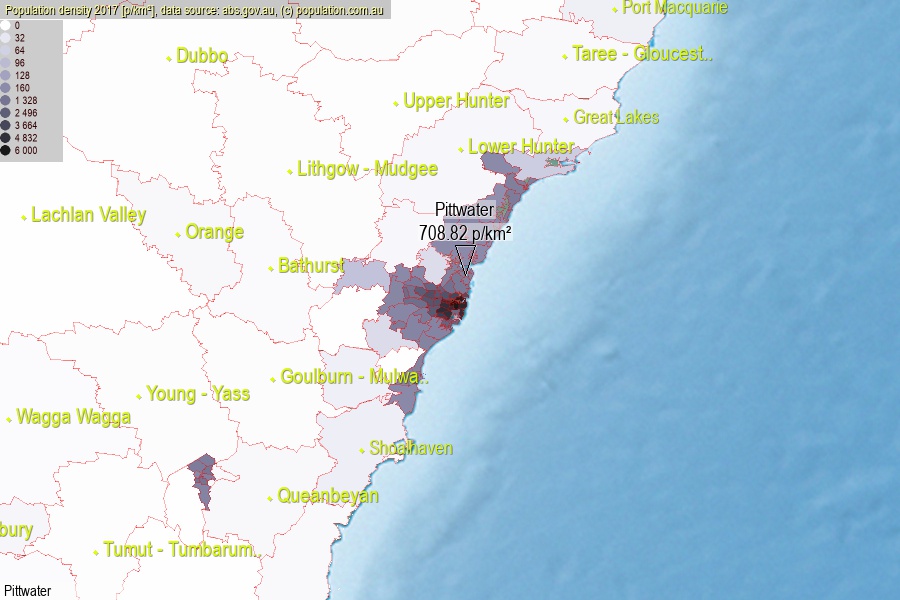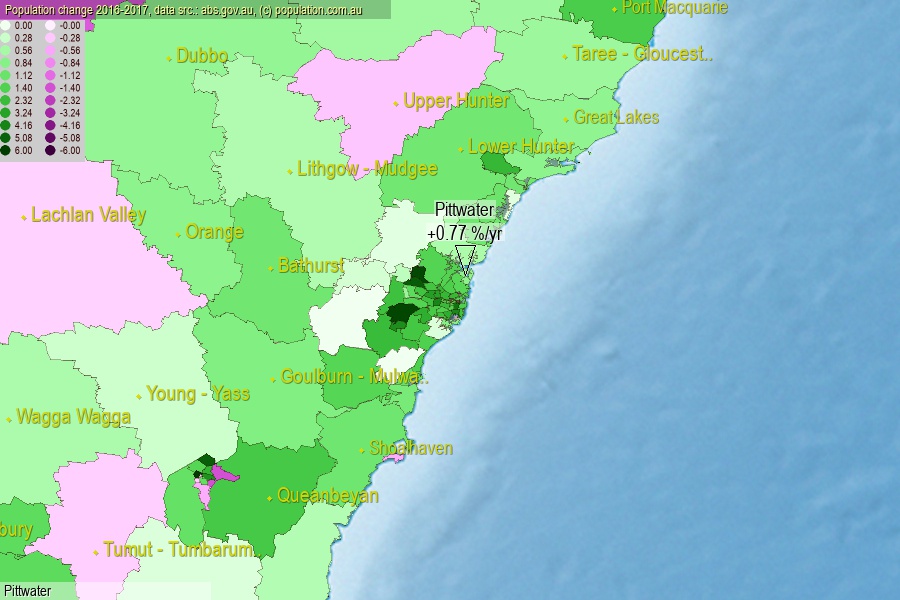 population.com.au
population.com.auLast official estimated population of Pittwater (as Statistical Area Level 3) was 63 794 people (on 2017-06-30)[2]. This was 0.26% of total Australian population and 0.802% of NSW population. Area of Pittwater is 90.00 km², in this year population density was 708.82 p/km² . If population growth rate would be same as in period 2016-2017 (+0.77%/yr), Pittwater population in 2025 would be 67 853. [0]



Click to enlarge. Pittwater is located in the center of the images.
Population [people], population density [p./km²] and population change [%/year] [2]
View borders » (new window) [4]
[1991-1992] +0.57 %/Y
[1992-1993] +0.08 %/Y
[1993-1994] +0.58 %/Y
[1994-1995] +0.59 %/Y
[1995-1996] +0.98 %/Y
[1996-1997] +1.05 %/Y
[1997-1998] +0.65 %/Y
[1998-1999] -0.14 %/Y
[1999-2000] +0.39 %/Y
[2000-2001] +0.85 %/Y
[2001-2002] +0.06 %/Y
[2002-2003] -0.43 %/Y
[2003-2004] -0.41 %/Y
[2004-2005] +0.60 %/Y
[2005-2006] +0.55 %/Y
[2006-2007] +0.76 %/Y
[2007-2008] +0.81 %/Y
[2008-2009] +2.69 %/Y
[2009-2010] +1.54 %/Y
[2010-2011] +1.47 %/Y
[2011-2012] +0.73 %/Y
[2012-2013] +1.00 %/Y
[2013-2014] +0.81 %/Y
[2014-2015] +1.06 %/Y
[2015-2016] +1.03 %/Y
[2016-2017] +0.77 %/Y
[0] Calculated with linear interpolation from officially estimated population
[1] Read more about SA3 and Australian Statistical Geography Standard (ASGS) on abs.gov.au
[2] Population data from Australian Bureau of Statistics (Population and density: 2017; change: 2016-2017)
[3] Digital Boundaries: Australian Statistical Geography Standard (ASGS) 2016.
[4] Border coordinates are simplifyed using Ramer-Douglas-Peucker algorithm.